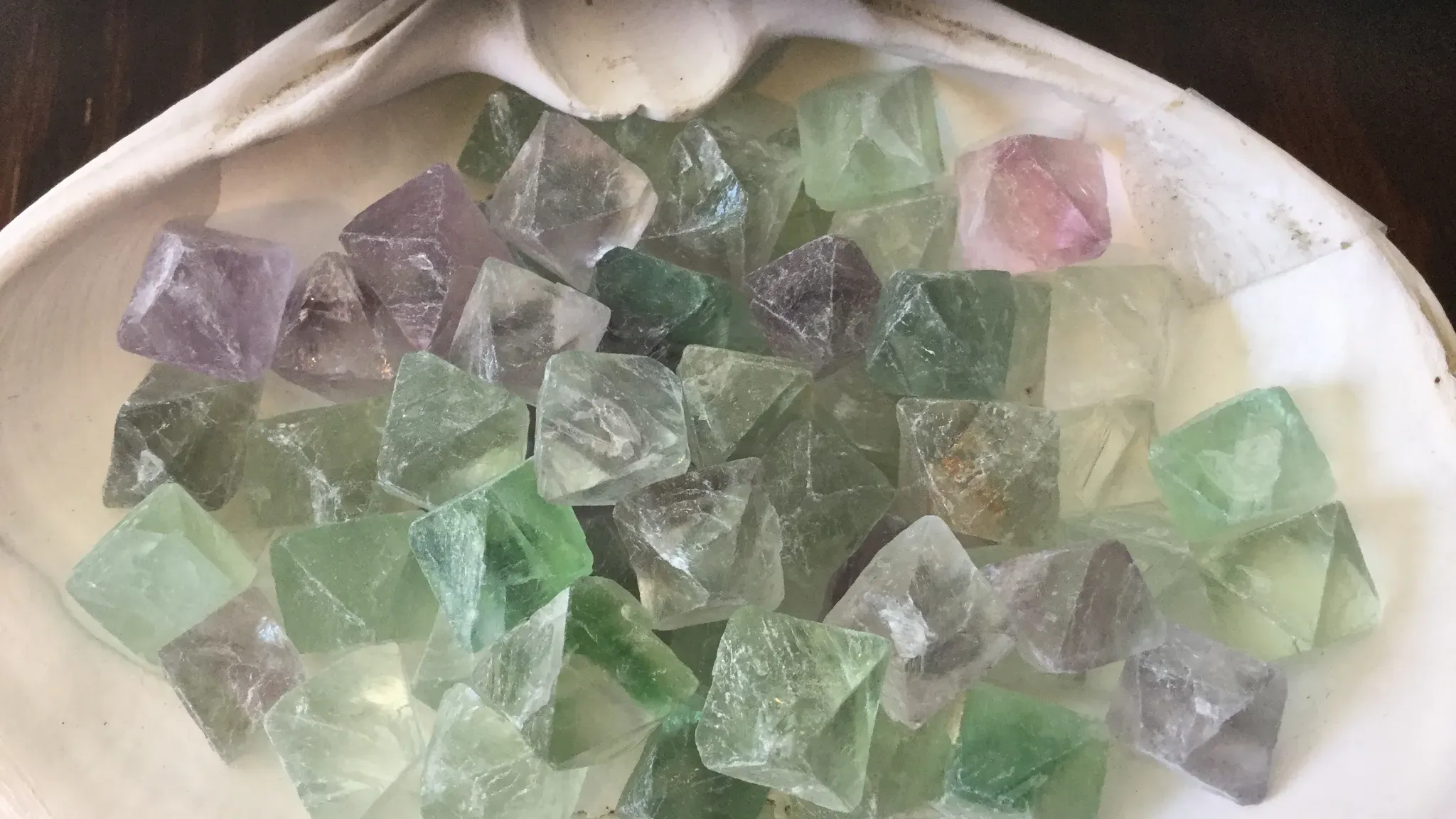Fluorite, also known as fluorspar, is a widely used mineral in both industrial and jewelry applications. It is renowned for its vibrant colors and unique physical and chemical properties. China, as one of the largest producers of fluorite globally, holds a significant position in the international market. This article provides an in-depth look into Chinese fluorite, including its distribution, characteristics, applications, and global impact.
1. Distribution and Reserves of Fluorite in China
China boasts abundant fluorite resources, with key reserves found in several provinces:
- Jiangxi Province: Jiangxi is one of the most fluorite-rich areas in China, especially in Yichun, where large-scale, high-quality fluorite deposits are found.

- Hunan Province: Hunan is another major fluorite-producing region, with mines concentrated in areas like Zhuzhou and Chenzhou. The fluorite here is prized for its high purity and diverse color variations.

- Guangxi Zhuang Autonomous Region: Fluorite deposits in Guangxi, mainly around Liuzhou and Hezhou, are notable for their high-grade fluorite used in industrial applications.

- Inner Mongolia Autonomous Region: Inner Mongolia’s fluorite reserves, particularly in Baotou and Bayan Nur, are abundant and cater to industries like metallurgy and chemicals.

China’s fluorite reserves are among the largest in the world, and the country’s production significantly contributes to the global fluorite supply.
2. Characteristics and Diversity of Fluorite
Fluorite is composed of calcium fluoride (CaF₂) and is known for its distinctive crystal structure and vibrant colors. Key characteristics of fluorite include:
- Color Variations: Fluorite exhibits a wide range of colors, including green, purple, blue, yellow, and even colorless. These variations are primarily caused by impurities within the crystal, with each element contributing to different hues.
- Fluorescent Properties: Fluorite is famous for its ability to fluoresce under ultraviolet light, emitting a brilliant glow. This property makes fluorite highly valued in scientific research and gemstone collections.
- Softness: Fluorite has a Mohs hardness of 4, making it relatively soft and easy to carve. This softness makes it a popular choice for decorative items and carved gemstones.
- High Transparency: High-quality fluorite is often transparent, making it suitable for use in optical lenses, prisms, and other precision instruments.
3. Major Uses of Fluorite
Fluorite has diverse applications across various industries, including:
- Metallurgy: Fluorite is widely used as a flux in steelmaking, helping to reduce the melting point of slag and improve the efficiency of metal extraction.
- Chemical Industry: Fluorite is the primary source of fluorine, which is used to produce a wide range of chemicals, including hydrofluoric acid (HF), an essential industrial chemical used in refrigeration, aluminum production, and more.
- Optics: Due to its high transparency and refractive properties, fluorite is used to manufacture high-precision optical instruments, such as lenses for cameras, telescopes, and microscopes.
- Jewelry and Decorative Items: Fluorite’s rich colors make it a popular choice for gemstones and ornamental objects. It is often carved into various shapes and used in jewelry, highly sought after by collectors and enthusiasts.
4. China’s Global Fluorite Standing
China is the largest producer and exporter of fluorite in the world, accounting for approximately 40% of the global reserves. In recent years, China’s fluorite industry has undergone significant technological upgrades and has implemented environmental protection measures, leading to increased production efficiency.
China not only meets domestic fluorite demand but also exports to markets worldwide, with fluorite playing a vital role in global industries such as metallurgy and chemicals.
As global demand for fluorine-based products continues to rise, China’s fluorite export volume has steadily increased, solidifying its position as a key player in the global supply chain.
5. Fluorite as a Collectible and Cultural Artifact
Beyond its industrial uses, fluorite is cherished in the realm of gemology and cultural art. Its vibrant colors and translucency make it a popular gemstone. Chinese artisans have a long history of carving fluorite into seals, figurines, and decorative items, reflecting the nation’s appreciation for mineral beauty.
Purple fluorite, rainbow fluorite, and green fluorite are among the most coveted varieties in the gemstone market, often admired for their fluorescent properties and natural colors.
6. Challenges in Fluorite Mining and Environmental Sustainability
Despite fluorite’s high demand, its extraction poses environmental challenges. In response to growing environmental concerns, the Chinese government has enforced stricter regulations on fluorite mining, promoting the use of greener mining technologies to minimize ecological impact. Through sustainable resource development, China aims to balance the growing demand for fluorite with environmental protection.
Conclusion
Chinese fluorite holds a significant position in the global market due to its vast reserves, high quality, and diverse applications. From industrial use to gemstone collections, Chinese fluorite demonstrates its unique value. As technology advances and environmental measures strengthen, the Chinese fluorite industry is poised to continue thriving, providing the world with high-quality fluorite products.
Fluorite is not only an essential resource for industries but also a beautiful gemstone, worthy of appreciation and collection. Exploring China’s rich fluorite resources and cultural heritage will continue to reveal more surprises for mineral enthusiasts and collectors.
















